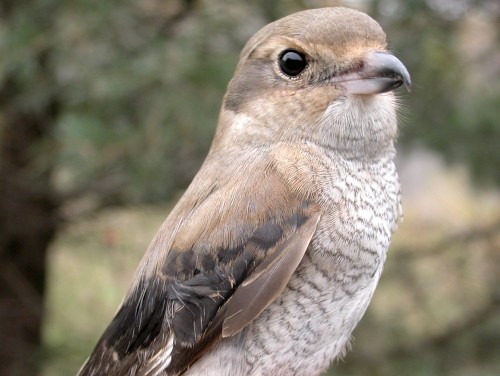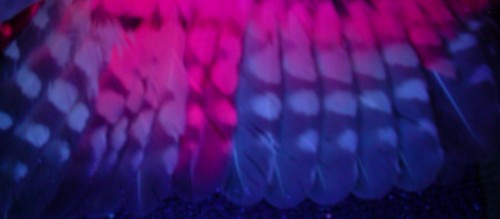|
McGILL BIRD OBSERVATORY |
|||||||||||||||||||||||||||||||||||||||||||||
Welcome to the McGill Bird Observatory weekly report. Click here for a complete listing of our archives. Comments or questions are welcome at mbo@migrationresearch.org.
Banders-in-charge:
Marcel Gahbauer, Barbara Frei, Marie-Anne Hudson Notes: Our thirteenth and final week of the 2005 Fall Migration Monitoring Program has come to an end. Sincere thanks to all who have helped out since the beginning of August, especially the "regulars" who have been out once or more per week. On the whole we've had a tremendously successful fall season, but it would not have been possible without all this help. The October rainy season continued into this week, but at last by Thursday the skies dried up, and over our final weekend we had glorious sunshine. As a result, we actually banded a few more birds than in week 12, and the decline in number of species observed compared to last week was only a small one. As expected though, the bird community has taken on a decidedly wintry feel in this final week. Not a single warbler was observed and just one vireo (a Blue-headed on Monday) was seen, and there were only a few other late-lingering birds: Gray Catbird (Monday), Chipping Sparrow (Friday), and Ruby-crowned Kinglet (Sunday). On the other hand, the "winter finches" were well represented with Purple Finch, Pine Siskin, Common Redpoll, Pine Grosbeak, and Snow Bunting arriving in small numbers (the final three species all new additions to the fall list). The Northern Shrike which arrived on Monday was also a first for the season, and the several flocks totaling 1180 scaup on Thursday were entirely new for MBO (likely they included both Lesser and Greater Scaup, but the only ones we had a chance to look at closely were all Lesser). The flock of 34 Snow Buntings on our final day brought the season total to 151 species, many more than we had expected. Slate-coloured Juncos dominated this week in the nets, with 79 individuals, representing over 40% of all birds banded. Far behind in second place were Black-capped Chickadees with 31, but there seemed like many more due to the 30 recaptures we had during the week. A surprise newcomer to the top 5 was Fox Sparrow with 20 - last year we banded only one for the whole fall season, and prior to this week our cumulative total was only 15! Rounding out the final week's top 5 were American Robin (18) and American Tree Sparrow (16). Meanwhile, a couple more nights of owling brought our season total of Northern Saw-whet Owls up to 17, the same as in 2004. While the fall season for passerines has come to a close, we may yet try for owls a few more nights, if weather conditions are suitable. A full report on the 2005 Fall Migration Monitoring Program will be prepared by mid-December, and will be posted on the MBO Banding Log page. Banding will continue during the winter, but at a reduced frequency; the website updates will likely continue on a weekly basis.
|


